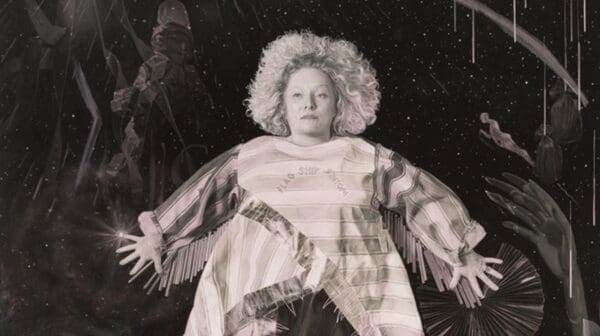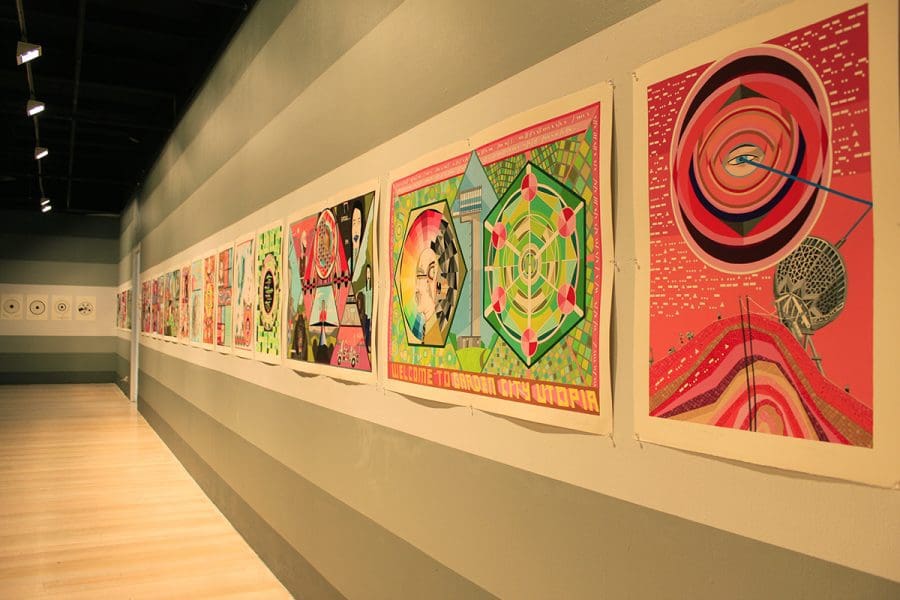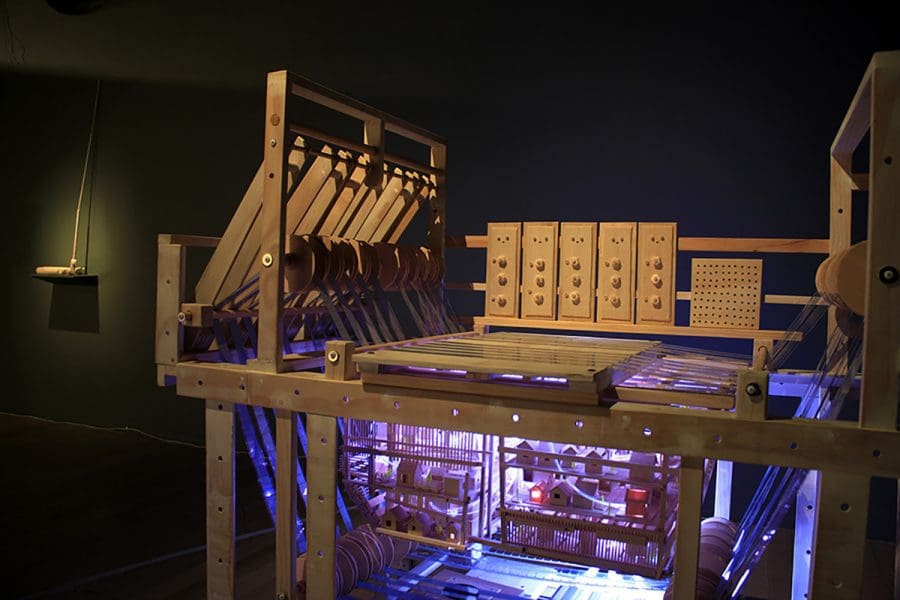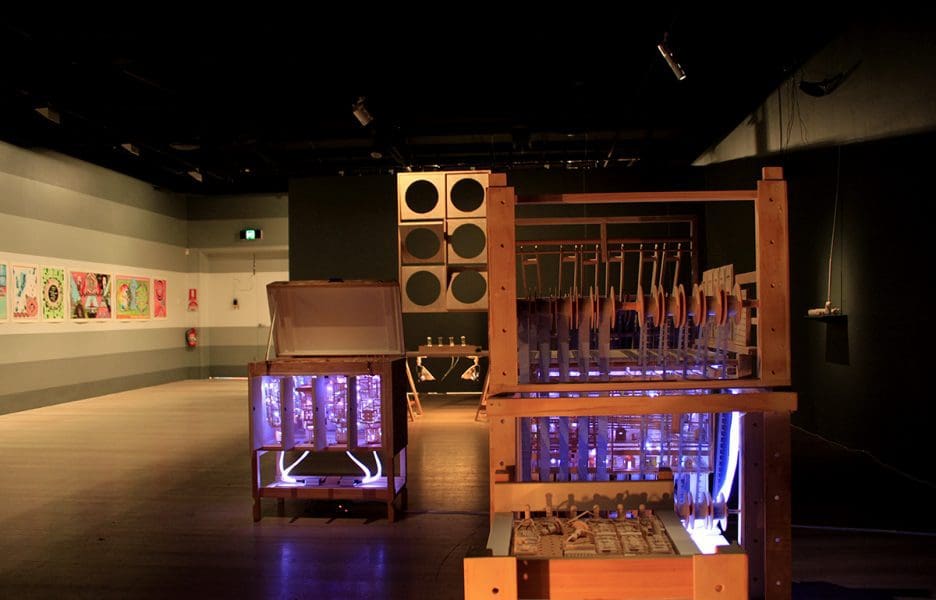
Julie Fragar wins the 2025 Archibald Prize
Congratulations to Julie Fragar, who has won the 2025 Archibald Prize for Flagship Mother Multiverse (Justene), her portrait of fellow artist and colleague Justene Williams.

Tricky Walsh, Detail of the installation Tiefenzeit, 2015/2016, gouache on paper (28 works in total).

Tricky Walsh, page 24: They activate the conductors, 2016, gouache on paper, 120 x 75 cm.

Tricky Walsh, page 22: Mitchell, Son of Ebenezer, 2016, gouache on paper, 120 x 75 cm.

Tricky Walsh, page 14: Welcome to Garden City Utopia, 2016, gouache on paper, 120 x 75 cm.

Tricky Walsh, detail of the Oramics machine, 2015, timber, balsa wood, optic fibres.

Tricky Walsh, Installation view 1 – showing The Oramics machine (foreground) and behind it, the optical telegraph and atomiser, and VLF station, 2015/2016, timber, optic fibres, balsa wood, perfumery, ultrasonic speakers, radio transmitter and sound works.
Tricky Walsh’s work is like an iceberg. The surface is only part of the story. Given her deep affiliation with comics, Walsh’s images are often sequential with a strong narrative thread. Adept at working across disciplines, Walsh’s practice is defined by geometric angles, intricate woodwork and dense patterns possessing the precision of architectural blueprints. In Tiefenzeit, Walsh successfully brings together the unusual combination of graphic storytelling, sculpture and sound to illustrate the outcomes of parallel worlds.
Directly linked to a 2015 residency in London, where Walsh visited Bletchley Park and the Oram Collection, Tiefenzeit is part fiction, part history lesson. It is Walsh’s homage to wartime code, technological relics and early communication devices. The influence of code is immediately clear. The exhibition entrance houses a radio and a series of decoder rings that connect with the neon flushed geometric patterns found within many of the works that follow.
Tiefenzeit begins with 28 paintings documenting Day One in multiple universes. Inspired by the science fiction novels of American writer Ursula K Le Guin, the images weave a loose abstract narrative and are populated by robots, strange humanoid figures and animals.
Like layers of a choose-your-own-adventure story, the paintings use a visual structure akin to comics, with each image broken into panels to illustrate the progression of action and time.
Extending the narrative further are a series of sculptural replicas of mechanical elements referenced in the paintings. “When I was in London, I was looking at a lot of WWII technology,” says Walsh. “Optical telescopes still remain on top of buildings in the city and their moveable panels were used as communication devices. I have recreated one here as they appear in the paintings as a way to relay messages.” Pushing the boundaries of this device beyond the optical, Walsh has added extra sensory layers. At the base of the telescope are four vials filled with evocative scents, while the crackly atmospheric sound emitted by an Aurora Borealis in Iceland floods the space around it.

A recurring character throughout Tiefenzeit is Daphne Oram, a British pioneer in the development of electronic music. Alongside the optical telescope, Walsh has also created a wooden replica of Oram’s signature 1957 creation, the Oramics Machine. “The Oramics Machine is an early electronic music synthesizer,” Walsh explains. “It was reverse engineered from a radar and possesses a waveform scanner. I became really fixated on this machine as Oram drew on 35mm film to manipulate sound, basically working like an artist. Electronically she was very intuitive with the way she put things together.”
The level of detail in Tiefenzeit reflects Walsh’s solid work over 12 months. The combination of images, sculptures and sound constructs a complex yet absorbing exhibition that demands repeat viewings to uncover each unique aspect. It brings to light the multiple layers of invention and exploration that have gone before most of what we experience today. “A lot of the work I do is homage,” the artist says, “but it is also about the lost history we have built so much of our lives upon.”
Tricky Walsh: Tiefenzeit
Contemporary Art Tasmania
8 October – 13 November